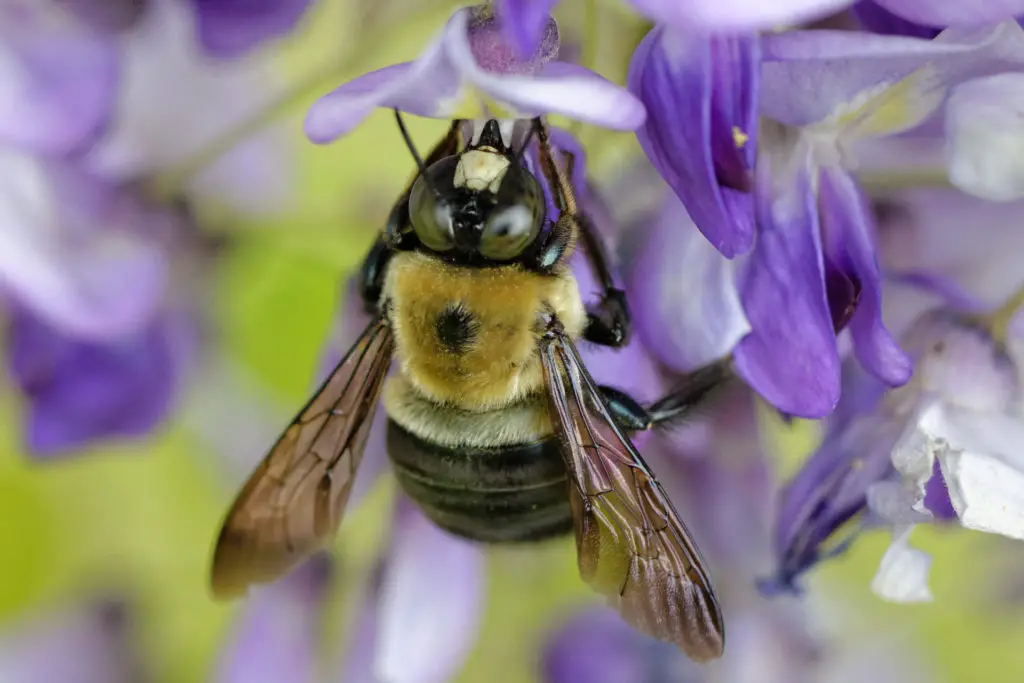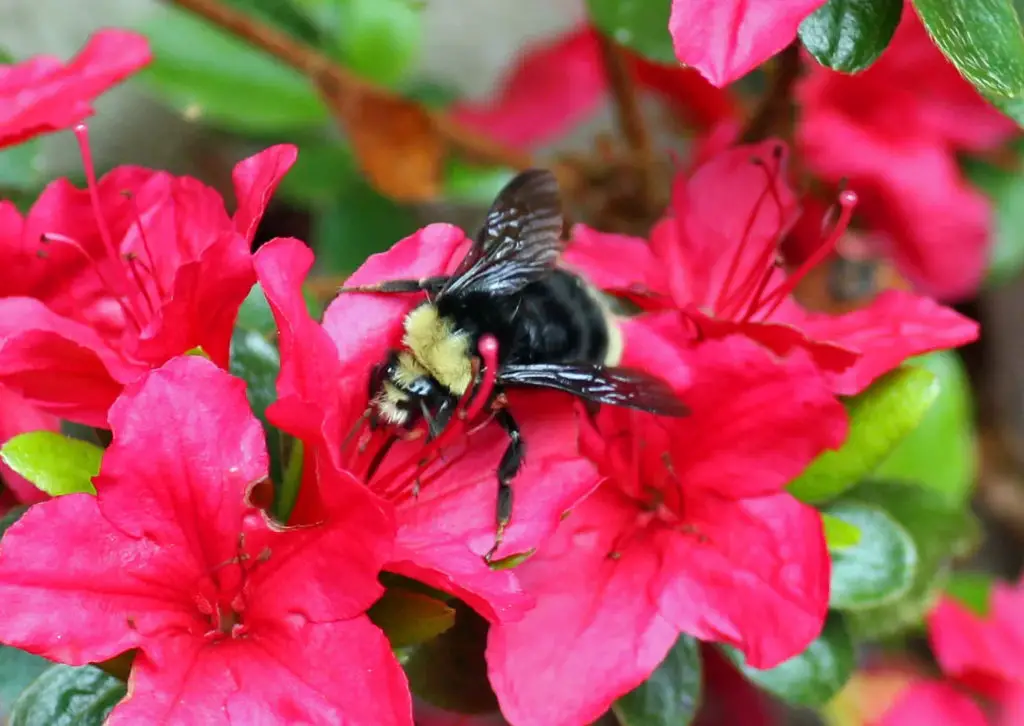Affiliate Disclaimer - As an Amazon Associate I earn from qualifying purchases.
It supports the website. So, Thank you
Do bees work wisteria? Yes, they do. Bees are important for wisteria because they help to pollinate the flowers, allowing the plant to produce fruit. There are several ways to make sure your wisteria is getting the attention it needs from bees.
Table of Contents
Is wisteria poisonous to bees?
No, wisteria is not poisonous to bees.
What is wisteria?
Wisteria is a flowering vine that is native to Asia and North America and is commonly grown for its ornamental flowers.
Wisteria is a flowering plant that attracts pollinators with its fragrant purple flowers.
Wisteria is a flowering plant species in the pea/legume family and grows best in moist, well-drained soil with partial shade.
Wisteria is attractive to hummingbirds, and many other creatures as well such as bees and butterflies. Bees are important for wisteria because they help to pollinate the flowers, allowing the plant to produce fruit.
Wisteria Identification
Wisteria is a woody vine that can climb as high as 20m/66ft above the ground and spread to more than 10m/33ft across, climbing trees, buildings and landscaping structures.
It has loosely hanging flower clusters ranging in size from 6 to 18 inches.
Blossoms are typically pale purple, but some cultivars are white, pink or violet-blue.
There are 10 species of the genus Wisteria in the Fabaceae, or pea, family.
Only two species are native to the U.S., while the rest are native to Asia.
Two imported Asian species are common in American gardens — Chinese (Wisteria Sinensis) and Japanese (Wisteria floribunda) wisteria.
Wisteria plays the role of a beautiful, sturdy vining plant putting on a grand show of fragrant, cascading clusters of blossoms in the springtime.
It adds a touch of elegance, bounty, and fragrance to any garden setting.
Wisteria vines also pose as a luscious plant pleasing to behold and attractive to all manner of friendly fauna, such as birds, bees, and butterflies.
Wisteria typically grows best in cool climates with moist soils and plenty of sunlight.
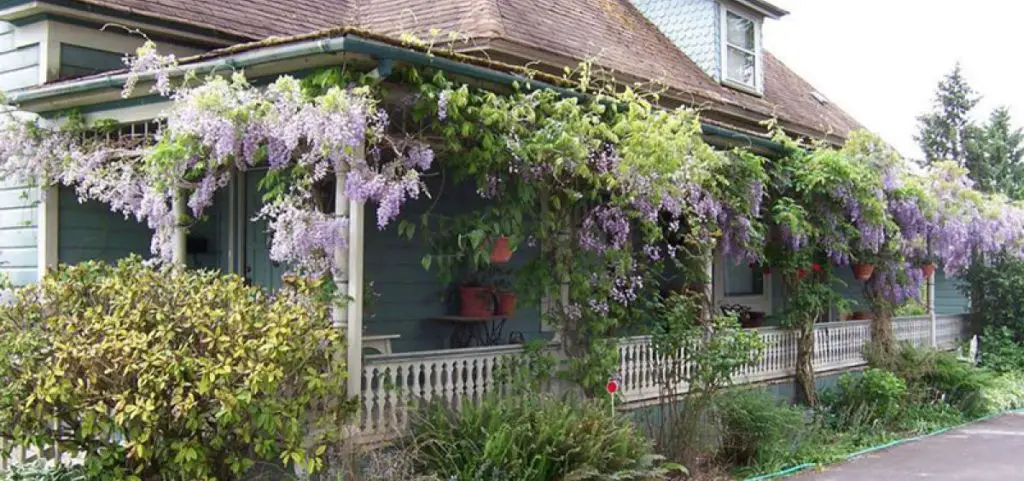
Is wisteria bee-friendly?
Do Bees Work Wisteria?
Wisteria is a beautiful plant that attracts many types of pollinators such as hummingbirds, butterflies and especially, bees.
Honey bees are attracted to wisteria flowers for their shape and color.
What are the benefits of wisteria?
Some benefits of Wisteria include:
- Beautiful flowers
- Can grow in a variety of climates
- Wisteria attracts many insects with its abundance of flowers and strong scents.
- Provides privacy
- Attracts butterflies, hummingbirds and other insects
- The flowers are lovely and have a sweet smell.
- The flowers can be dried and used in various ways.
- Wisteria is drought-tolerant and grows quickly.
Are there any adverse effects of wisteria?
Some potential adverse effects of wisteria include:
- Wisteria can damage structures if it grows too close
- The weight of the vine can cause branches to break on trees or other plants that it is growing on
- Wisteria vines can be invasive and difficult to remove
- It can take a lot of space in a garden
- Wisteria blooms late in the spring, so it may delay other flowers from blooming
There are no known adverse effects of wisteria from a bee or human point of view.
Wisteria is generally safe for consumption when used in moderation.
Common insect pests of the wisteria include aphids, scales and long-horned borers.
Do wisteria plants attract bees?
Yes, wisteria plants do attract bees.
Bees are important pollinators of wisteria flowers, and they help to transfer pollen from the male parts of the flower to the female parts. This process allows the wisteria plant to produce fruit.
What type of bees visit wisteria?
Honey bees are the type of bee that most commonly visits wisteria flowers.
Bees are attracted to wisteria for its shape and fragrant purple flowers.
The vines can grow in a variety of climates and attract many insects such as honey bees with their abundance of flowers and strong scents.
Wisteria provides bees with good food.
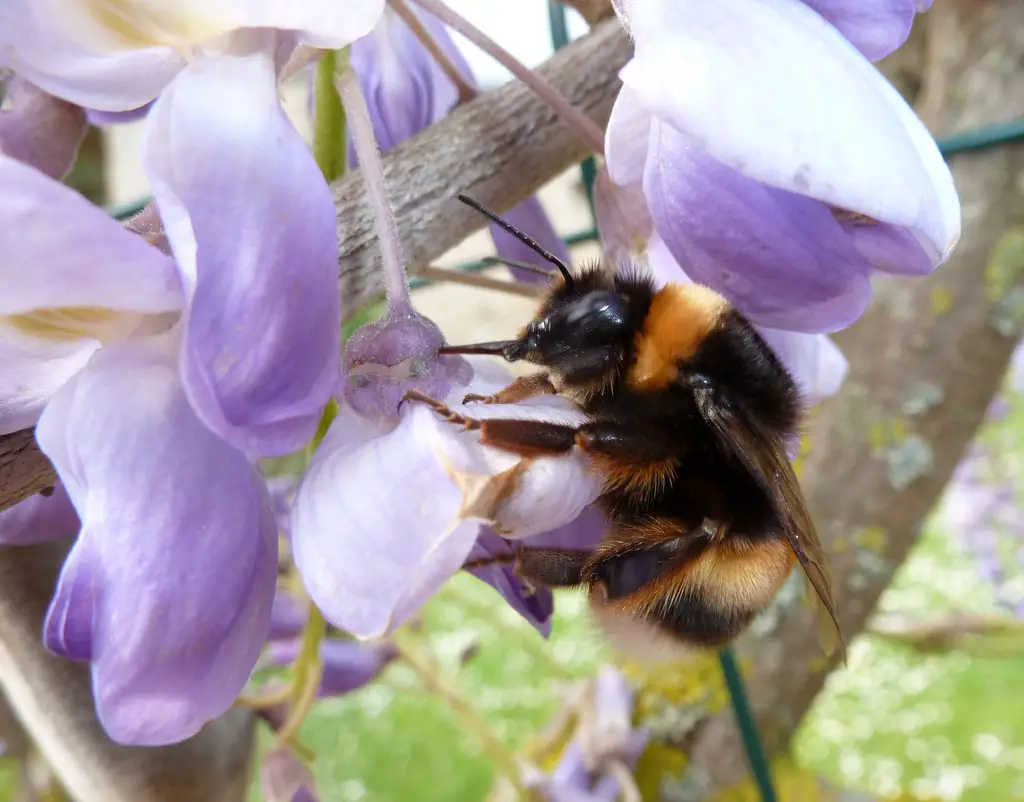
What are the different types of bees that live in wisteria plants?
There are various types of bees that live in wisteria plants. Some of these bees are honey bees, bumblebees, and carpenter bees.
Different types of bees are attracted to wisteria plants that produce both nectar and pollen.
Does wisteria produce nectar?
Wisteria flowers do not have long floral tubes, instead offering nectar near the surface of the flower.
Bees are attracted to gardens with a range of different flowering plants.
Wisteria produces nectar that is used to make wine.
The flowers are pollinated by bees.
Nectar production peaks in late spring and early summer.
Do honey bees get nectar from wisteria?
Yes, honey bees can extract nectar from many types of plants including wisteria.
Honey bees love wisteria and dance around each dangling cluster of blossoms gathering nectar for this season’s honey stores.
Bees enjoy the flowers as much as we do, but the blossoms only last for a month or so.
Do bumblebees like wisteria?
Bumblebees are attracted to wisteria flowers because of their sweet smell.
Bumblebees will visit other plants in addition to wisteria, but they tend to prefer the flowers of wisteria.
There is a possibility that bumblebees may sting humans if they are disturbed while visiting the flowers of wisteria.
Do bees prefer certain flowers?
Bees are particularly attracted to bee balm, echinacea, snapdragon, and hostas, as well as a number of other wildflowers like California poppies and evening primrose.
Did you know that bees have excellent color vision? For this reason, they flock to yellow, purple, blue, and white flowers, therefore, Wisteria plants are known to be attractive to bees.
Some beekeepers suggest that wisteria plants can help pollinate other plants in the garden.
Some plants provide nectar and others provide pollen, plant species that provide both resources are a necessity for bee gardens.
Which Flowers Do Bees Like?
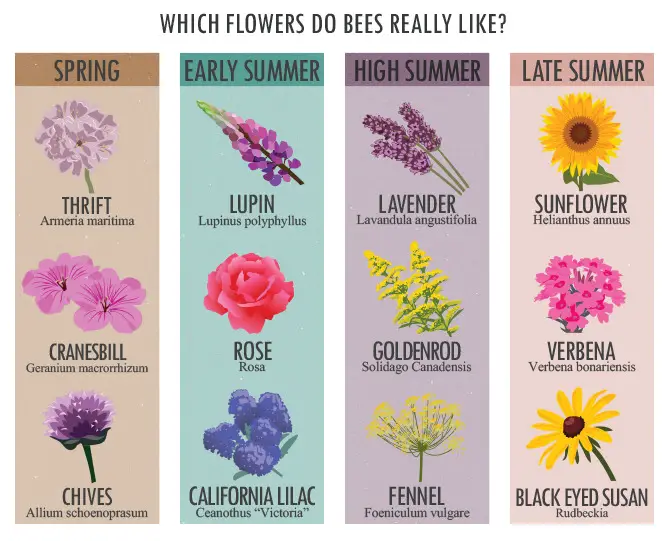
Plants To Avoid In Your Bee Garden
Some plants are known to be harmful to bees, these plants include:
- Rhododendron (most hybrids)
- Aesculus californica, commonly known as the California buckeye or California horse-chestnut
- Karaka or New Zealand laurel (Corynocarpus laevigatus)
- Angelica triqueta (Apiciaceae)
- Astragalus lentiginosus also known as spotted locoweed or freckled milkvetch
- Camellia thea or otherwise known as the Tea Tree
- Yews
These plants can be potentially toxic to bees and can affect honey bee larvae.
Avoid plants that flower primarily in fall or winter.
deadhead spent flower heads to encourage more bloom for a longer period of time.
Rhododendrons and related plants produce grayanotoxin, which has toxic effects – including nausea and vomiting.
Grayanotoxin makes its way into honey via nectar foraged by bees – resulting in “mad honey.”
Mad honey intoxication is not a significant problem in the United States, but it can be present in raw, unprocessed honey produced by backyard beekeepers like us.
Rhododendron
Toxic effects can include nausea and vomiting.
Grayanotoxin makes its way into honey via nectar foraged by bees. The result is known as “mad honey.”
Mad honey intoxication doesn’t seem to be a significant problem in the United States. When provided with more suitable plants for foraging, bees may not gather much nectar from rhododendrons. But why tempt them?
Also, mad honey is most likely to be present in raw, unprocessed honey. As a backyard beekeeper, I assume your honey, like ours, is raw.
For more information on mad honey, see our article What Is Raw Honey? (Besides Delicious)Mountain Laurel, like rhododendron, produces grayanotoxin; we’d avoid planting them
Rhododendron from the heath family (Ericaceae) is poisonous to bees and humans . It contains an andromedotoxin
Mountain Laurel
Mountain Laurel (Kalmia latifolia) also contains an andromedotoxin which can poison humans. Grayanotoxin is produced by mountain laurel, which can be harmful to bees.
Mountain Laurel is a poisonous plant to avoid in your bee garden.
Yellow Jessamine
Yellow Jessamine is the state flower of South Carolina
There are concerns that consuming too much of this plant may be harmful to honeybees and humans
Azaleas
Azaleas are beautiful, colorful spring flowers, but be aware that they may be toxic to bees.
Conclusions:
Wisteria is a great plant for bees as it provides both pollen and nectar.
Some other good plants for bees include bee balm, echinacea, snapdragon, and hostas, as well as a number of other wildflowers.
Bees are also attracted to yellow, purple, blue, and white flowers.
Some plants are known to be harmful to bees and should be avoided in your bee garden. These plants include rhododendrons, mountain laurel, yellow jessamine, and azaleas.
Avoid planting plants that can cause problems for bees, such as yews and rhododendrons.
Don’t plant over-wintering flowers (such as poinsettias), because they can draw attention away from the bee colony during the winter months.
Avoid bringing new plants into the garden until you are sure they are safe for bees – research any new plants before adding them to your garden!

